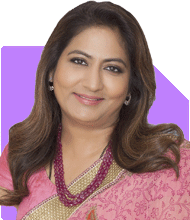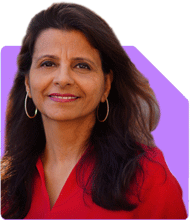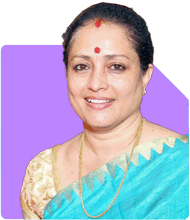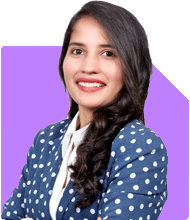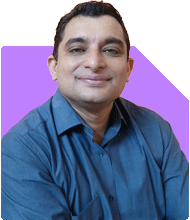Is there a way to lower bad cholesterol levels while managing menopause weight gain?
Dr Nandita Palshetkar | Answer |Ask -Follow
Gynaecologist, IVF expert - Answered on Nov 25, 2024
She is a pioneer in ICSI, laser hatching, spindle view, oocyte and embryo freezing, IMSI, in vivo vaginal culture, metabolomics, embryoscope and spindle check technologies.
With over 30 years of experience, Dr Nandita is managing 10 centres across India.
She has written over 100 papers, edited 25 books and given over 1,000 lectures and speeches.
She has also won several prestigious awards, including the Dronacharya Award (2021), the Bharat Gaurav Award at the House of Commons in London (2014) and the Inspiring Gynaecologists of India (2018) to name a few.
Dr Nandita completed her MBBS from Grant Medical College and Sir J J Hospital, Mumbai, and her MD in obstetrics and gynaecology from Mumbai University."... more

Hi how do i lower my bad cholesterol levels and i am going through menopause so its so hard for me to loose weight
But we can take care of bad cholesterol by certain dietary changes in exercises:
1) eat soluble fibers which bind with cholesterol and leave the body like beans, peas, oats, apple, carrot
2) eat more plant sterols and stanols which can prevent the body from absorbing cholesterol
3) eat food rich on omega 3 fatty acids, walnuts, flax, avocado, olive oil
4) eat soy protein which bring down cholesterol by 3 to 5 percent like Soya milk, Tofu, soy nuts
5) eat more nuts which lower cholesterol
6) eat food low in cholesterol and saturated fat
7) weight loss with aerobic activity, daily walks and exercise
8) some women need statins to low cholesterol
9) HRT have positive response to low cholesterol but to consult doctor before start
You may like to see similar questions and answers below
Komal Jethmalani | Answer |Ask -Follow
Dietician, Diabetes Expert - Answered on Mar 08, 2023
Dr Karthiyayini Mahadevan | Answer |Ask -Follow
General Physician - Answered on Jan 02, 2024
Komal Jethmalani | Answer |Ask -Follow
Dietician, Diabetes Expert - Answered on Jan 18, 2024
Shreya Shah | Answer |Ask -Follow
Nutritionist, Diabetes Educator - Answered on May 06, 2024
Dr Shakeeb Ahmed Khan |184 Answers |Ask -Follow
Physiotherapist - Answered on Mar 26, 2025
Ramalingam Kalirajan |10908 Answers |Ask -Follow
Mutual Funds, Financial Planning Expert - Answered on Dec 20, 2025
Ramalingam Kalirajan |10908 Answers |Ask -Follow
Mutual Funds, Financial Planning Expert - Answered on Dec 20, 2025
Naveenn Kummar |237 Answers |Ask -Follow
Financial Planner, MF, Insurance Expert - Answered on Dec 20, 2025
Ramalingam Kalirajan |10908 Answers |Ask -Follow
Mutual Funds, Financial Planning Expert - Answered on Dec 19, 2025
Nayagam P P |10859 Answers |Ask -Follow
Career Counsellor - Answered on Dec 19, 2025
Ramalingam Kalirajan |10908 Answers |Ask -Follow
Mutual Funds, Financial Planning Expert - Answered on Dec 19, 2025
Ramalingam Kalirajan |10908 Answers |Ask -Follow
Mutual Funds, Financial Planning Expert - Answered on Dec 19, 2025
Ramalingam Kalirajan |10908 Answers |Ask -Follow
Mutual Funds, Financial Planning Expert - Answered on Dec 19, 2025
Radheshyam Zanwar |6751 Answers |Ask -Follow
MHT-CET, IIT-JEE, NEET-UG Expert - Answered on Dec 19, 2025
Radheshyam Zanwar |6751 Answers |Ask -Follow
MHT-CET, IIT-JEE, NEET-UG Expert - Answered on Dec 19, 2025





